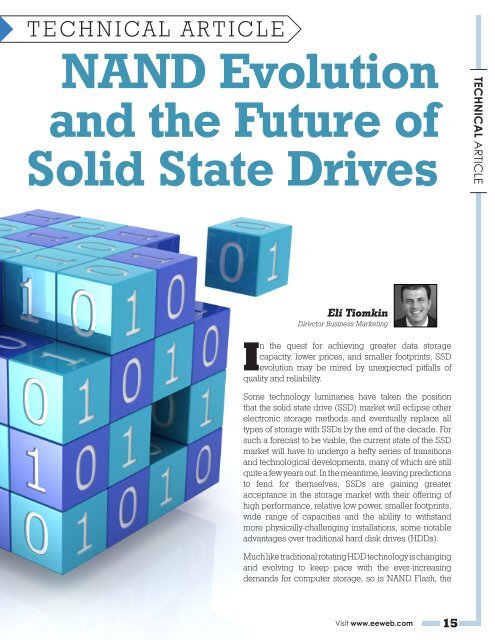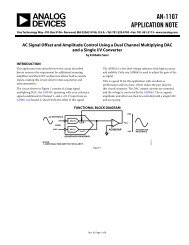Russ Croman - EEWeb
Russ Croman - EEWeb
Russ Croman - EEWeb
You also want an ePaper? Increase the reach of your titles
YUMPU automatically turns print PDFs into web optimized ePapers that Google loves.
TECHNICAL ARTICLE<br />
NAND Evolution<br />
and the Future of<br />
Solid State Drives<br />
Eli Tiomkin<br />
Director Business Marketing<br />
In the quest for achieving greater data storage<br />
capacity, lower prices, and smaller footprints, SSD<br />
evolution may be mired by unexpected pitfalls of<br />
quality and reliability.<br />
Some technology luminaries have taken the position<br />
that the solid state drive (SSD) market will eclipse other<br />
electronic storage methods and eventually replace all<br />
types of storage with SSDs by the end of the decade. For<br />
such a forecast to be viable, the current state of the SSD<br />
market will have to undergo a hefty series of transitions<br />
and technological developments, many of which are still<br />
quite a few years out. In the meantime, leaving predictions<br />
to fend for themselves, SSDs are gaining greater<br />
acceptance in the storage market with their offering of<br />
high performance, relative low power, smaller footprints,<br />
wide range of capacities and the ability to withstand<br />
more physically-challenging installations, some notable<br />
advantages over traditional hard disk drives (HDDs).<br />
Much like traditional rotating HDD technology is changing<br />
and evolving to keep pace with the ever-increasing<br />
demands for computer storage, so is NAND Flash, the<br />
<strong>EEWeb</strong> | Electrical Engineering Community Visit www.eeweb.com 15<br />
TECHNICAL ARTICLE















